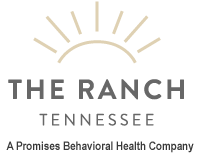In the journey of trauma recovery, many individuals discover behavioral patterns that they never recognized before. One such pattern is known as “fawning.” This term describes a trauma response where a person attempts to avoid conflict, abuse, or harm by people-pleasing, placating, or submitting to the needs of others.
Fawning is often an automatic response developed in childhood or after prolonged exposure to traumatic situations, making it a crucial topic to explore, especially for those seeking help from a residential PTSD treatment center in Nashville.
Understanding Fawning as a Trauma Response
Fawning is a learned behavior deeply rooted in the survival instinct. When someone faces consistent threats or abuse, their brain may adapt by prioritizing the needs of others over their own, believing that this will keep them safe. While other trauma responses like fight, flight, or freeze are more widely recognized, fawning is less discussed yet equally significant.
For someone experiencing fawning, saying “no” becomes nearly impossible. The desire to please others overrides their own needs, often leading to feelings of exhaustion, resentment, and a loss of identity. Over time, this can erode a person’s self-worth, as they continually put themselves in situations where they feel obligated to comply, regardless of their own feelings.
The Origins of Fawning
Fawning typically originates in environments where an individual feels their safety or well-being is threatened. In many cases, this begins in childhood, within family dynamics where there is abuse, neglect, or emotional manipulation. A child may learn that the best way to avoid punishment or emotional harm is to become excessively agreeable and compliant.
In other instances, fawning can develop later in life, especially in relationships characterized by power imbalances or control. Whether in a toxic relationship, an oppressive work environment, or any situation where an individual feels powerless, fawning becomes a mechanism for avoiding further harm. This response, though initially protective, can have lasting negative effects if not addressed.
Recognizing Fawning in Your Behavior
Recognizing fawning is the first step toward healing. Some common signs of fawning include:
- Difficulty saying no – Individuals who fawn often agree to things they do not want to do, simply to avoid confrontation or disappointment.
- Prioritizing others’ needs – Constantly putting others’ needs before their own, to the point of neglecting their well-being.
- Seeking approval – A persistent need for validation from others, often at the expense of their own opinions or desires.
- Suppressing emotions – Burying their own feelings to maintain peace or avoid conflict.
- Over-apologizing – Apologizing frequently, even when not at fault, as a way to preempt any potential anger or disapproval.
If you see these behaviors in yourself or someone you know, it may be a sign that fawning is at play.
The Impact of Fawning on Daily Life
Fawning can have profound impacts on various aspects of life. In relationships, it can lead to codependency, where one person’s needs dominate the dynamic. The person who fawns may feel unfulfilled, as their own needs are never met, yet they may continue the cycle out of fear of conflict.
In the workplace, fawning can result in burnout. Those who fawn may take on excessive workloads, agree to unfair demands, and struggle to assert themselves, all of which can lead to chronic stress and anxiety. Over time, this can diminish their sense of self and lead to feelings of hopelessness.
Socially, fawning can isolate individuals from their true selves. They may lose touch with their likes, dislikes, and passions, instead molding their identity to fit what they believe others want from them. This can lead to a deep sense of loneliness and a lack of genuine connection with others.
Healing from Fawning
Healing from fawning requires a multi-faceted approach, often involving therapy and support. Various therapies can help individuals reclaim their sense of self:
- Cognitive behavioral therapy (CBT) – CBT helps individuals identify and challenge the negative thought patterns that contribute to fawning. By understanding the roots of these thoughts, clients can begin to develop healthier, more assertive behaviors.
- Dialectical behavior therapy (DBT) – DBT focuses on balancing acceptance and change. For those who fawn, learning to accept their emotions and experiences while also building the skills to assert their needs is crucial.
- Mindfulness-based therapies – Mindfulness practices help individuals become more aware of their thoughts, feelings, and bodily sensations in the present moment. This awareness is key to recognizing when they are falling into fawning behaviors and making conscious choices to act differently.
Addressing fawning is essential for restoring balance and authenticity in one’s life.
Contact The Ranch Today
If you or a loved one are struggling with trauma responses like fawning, it’s important to know that help is available. Recovery Ranch is here to support you on your journey to healing. Our residential programs, therapies, and dedicated team offer a path to recovery where you can rediscover your true self and break free from the patterns that no longer serve you.
Contact The Ranch today at 1.844.876.7680 or online to learn more about our programs and how we can help you take the first step toward a brighter, more empowered future.

